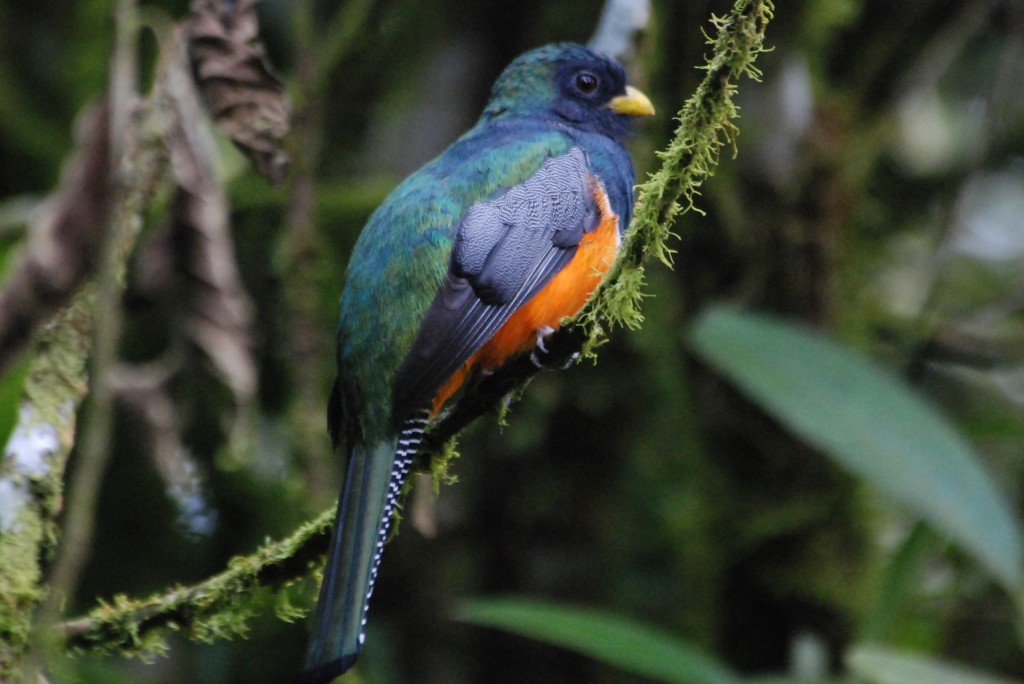Today’s destination was unusual in more ways than one despite its close proximity to our previous adventures. We packed our day packs full of field guides, binoculars, lunches, water bottles, sunscreen, and bug spray (aplenty). Nothing new for our group. However, once we crossed the Centennial Bridge, which was opened in 2004 as a response to heavy traffic on the Bridge of the Americas, we were in new territory. The bridge was constructed across the Culebra Cut, an artificial valley that was constructed jointly by French and American developers. Although this region was not geographically distant from where we were staying (Gamboa), this was our first experience with the dryer climate of the Pacific side of Panama. As our bus reached the entrance to Altos de Campana National Park, it became immediately obvious that our day would feature beautiful vistas of lush vegetation with hills and valleys rolling across the landscape. As a pleasant surprise, the climate was particularly hospitable and reminiscent of a cool summer day in central Ohio.
Our guide provided us with a plethora of information regarding the plants, animals, and other organisms which make this park their home, in addition to historical facts regarding the construction of the canal and previous usages of the park. It was the first national park in Panama and played an important role as a model system for many other parks around the country. Along our hike we encountered several species of insects, including one which may have been parasitized by fungi. In addition, our guide Iaan mentioned that at higher altitudes, there may be higher numbers of epiphytes. These are plants which make their living using other plants for structural support and include lianas and vines within several plant families, as well as bromeliads and mosses. Several species of spiders, shelf fungi, and palms were encountered along the way, but the most charismatic find of the trip was an Orange-bellied Trogon. The bird perched on a tree carefully inspecting its observers. Most of us unknowingly passed under it and were rewarded with harassment from a large horsefly, but returned soon after to much delight.
Despite the wide diversity of life forms in this area, I found the geology and landscape the most awe-inspiring. The park itself was part of igneous formations of a previously active volcano. Thus, the area has a history of geological activity, which is evident in the many peaks and red soil around the area. The andisols, which are formed from volcanic ash, are likely the reason for the red coloration. After our hike at the some of the park’s highest trails, we descended in our bus and made a final stop at an outlook. The outlook itself was merely a slab of cement with railings. Admittedly, it might provide a perfect context for a nice photo. Not so for this story.
A trail behind the outlook descended almost halfway down the slope. Following the trails with my eyes, I saw the pot of gold at the end of a rainbow: a grassy outcropping that would provide a closer look at the forest below and the Pacific Ocean to the south. A small group descended with the hopes of finding something. What we found was, like many other things real experiences provide, better than imagination alone can conjure. This area was beautiful but it resonated with some of us moreso than others. For me, I instantly recalled some of my adventures throughout the United States hiking through national parks. The lush hillsides gave way to an expanse of sea, only succumbing to the infinite sky. Despite climbing a fair distance down the hill, the hike back up did not trouble me at all. Often in these situations, exhaustion or weariness yield to curiosity and wonder. This will be a day to remember.



